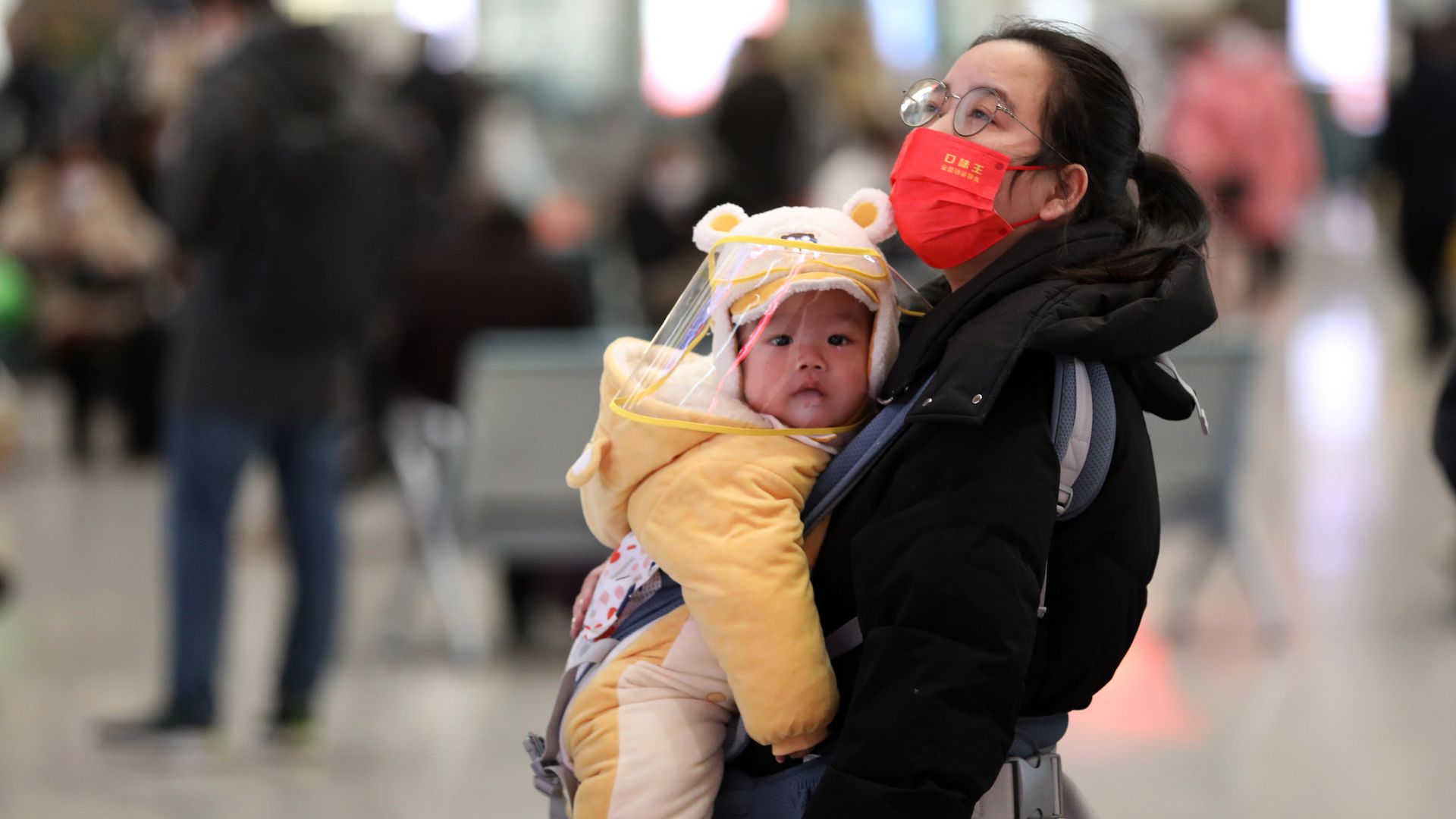Updated 8 hours ago – World

A woman holding a baby at Shijiazhuang Railway Station in Shijiazhuang, in the Hebei Province of China, on Jan. 7. Photo: VCG/VCG via Getty Images
China reported Tuesday its first population decline since 1961, as the world’s most populous country faces a demographic crisis.
By the numbers: There were 1.41175 billion people living in China at the end of 2022 — a drop of about 850,000 compared to the previous year’s end, according to data from Beijing’s National Bureau of Statistics Tuesday.
- A total of 9.56 million people were born in the country in 2022 and 10.41 million people died, per the NBS.
Of note: The United Nations projects that India will overtake China as the world’s most populous nation at some point this year.
The big picture: The data comes as Beijing grapples with a surge in coronavirus deaths after shifting from its zero-COVID policy that saw restrictions including lockdowns weaken its economy and disrupt global supply chains.
- Data from the NBS Tuesday showed China’s economy grew 3% last year — well short of the ruling Chinese Communist Party’s 5.5% target at the start of 2022.
Background: Beijing has in recent years moved to respond to its slowing population rate by relaxing family planning restrictions related to its strict one-child policy that came into effect in 1980 and was abolished in late 2015.
Thought bubble, via Axios’ Bethany Allen-Ebrahimian: This marks a clear inflection point that will slowly but dramatically change Chinese society and politics over the next few decades.
Go deeper: What China looks like after a decade of Xi Jinping’s rule
Editor’s note: This article has been updated with additional details throughout.







